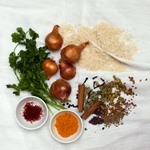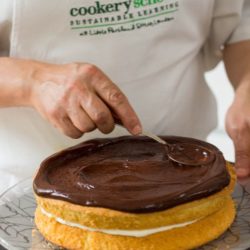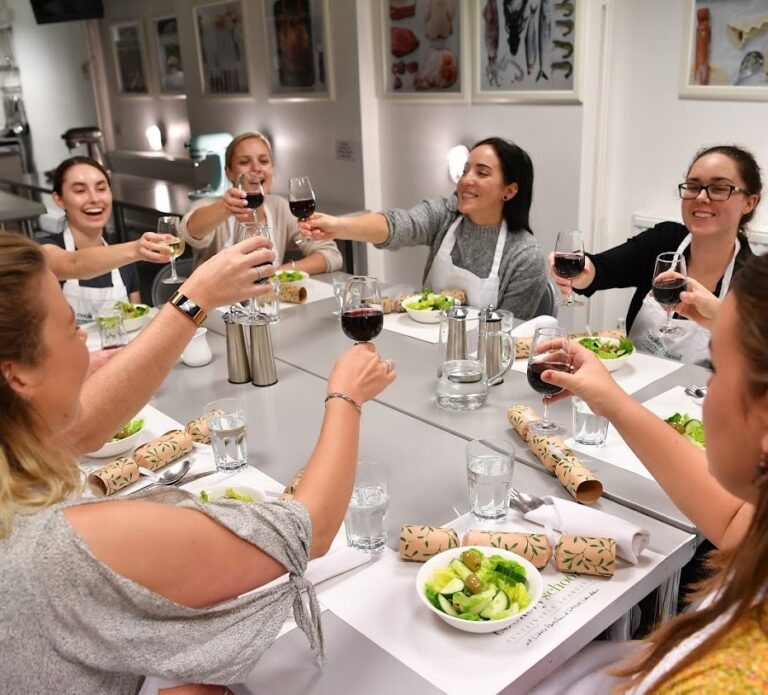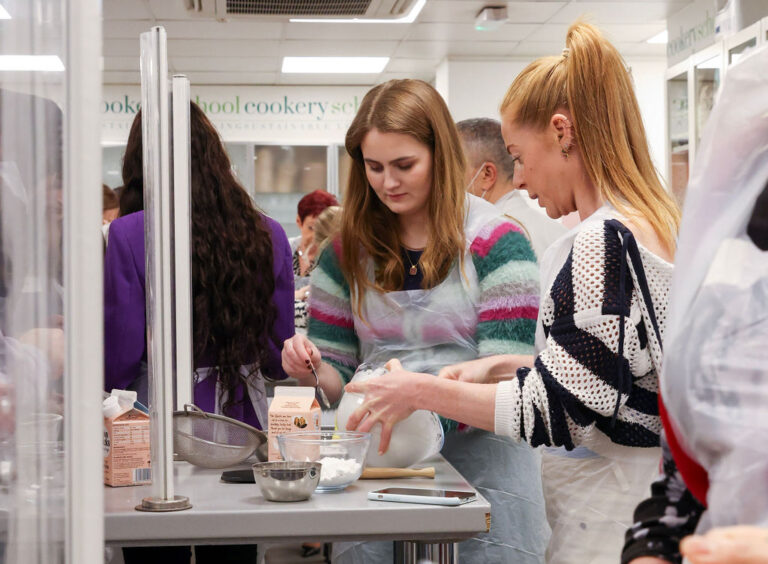RECIPE: Roast Lamb

In this article we look at the principles of roasting – a brilliantly simple cooking method that can be applied to everything from fruit and vegetables, to meat and fish. Our roast lamb recipe below is a perfect roast to make for Easter and during the spring with new season lamb.
Roasts: basic principles
– Coat the meat or vegetables to be roasted with flavouring, e.g. garlic and/or herbs.
– Baste with oil, where appropriate, or a marinade.
– Season well with salt and pepper.
– Place in a very hot oven and cook until crisp, turning if necessary to achieve good colour on all sides. For meat and poultry, time the cooking according to the pound or kilo as per the recipe.
– For meat, allow the joint to rest for a few minutes before carving. This allows the juices to relax back into the meat and makes for a more succulent roast.
– For chicken, it is very important that no part is partially cooked or uncooked. This can be dangerous as chicken can contain bad bacteria, such as salmonella or campylobacter, which can cause serious illness or even death. To check if chicken is done, insert a knife into the thickest part of the thigh (as this takes the longest time to cook). If the juices run clear, with no trace of blood in them, the bird is cooked This can be the test for cooking turkey or other birds too. Duck is often eaten rare, but is less susceptible to bacterial invasion if from a safe source.
– The safest way to check whether meat is cooked is to use a digital probe thermometer.
If the probe reading is 82°C / 180°F when inserted into a chicken/turkey thigh then the bird is safe to eat.
– To cook meat to varying levels of doneness, using a probe, look for a reading of 60°C / 140°F for rare meat, and 75–80°C / 170–175°F/ for well-done meat.
– When placing the probe in the chicken or meat to be tested, remove the meat from the oven and ensure that the probe is not touching a bone but is in the central, thickest part of the meat so that a true reading is taken.
Roast Lamb
Feeds 4-6 / Freezer Friendly
Ingredients
2.5 kg / 5 lb leg of lamb, on the bone
4 garlic cloves, peeled and sliced lengthways into about 4 slivers
2 garlic cloves, peeled,and crushed
handful of fresh rosemary
salt and freshly ground pepper
Method
1. Preheat your oven to 190ºC / 375ºF.
2. Using a very sharp knife, make about 15 incisions in the lamb.
3. Push a sliver of garlic and a sprig of rosemary into each incision.
4. Spread the crushed garlic over the lamb, as evenly as possible.
5. Season the joint all over with salt and pepper.
6. Place on a roasting tray and cook in the oven, allowing 24 minutes per kg or 12
minutes per lb for rare lamb, or 30–32 minutes per kg or 15–16 minutes per lb for
lamb that is well done.
7. Leave to stand for about 15 minutes before carving and serving.
8. Serve the pan juices separately.
Rosalind’s tips
1. Never throw away pan juices, use them to make the most delicious homemade gravy.
2. Use leftover roast lamb in sandwiches or thinly sliced on a charcuterie board.
3. Do not cover the meat in foil as you want the skin to caramelise and be crispy
4. As tempting as it might be, leave your roasted meat to stand after cooking for approximately 15 minutes, by leaving it to rest it allows the juices to redistribute evenly through out the meat, resulting in more tender and juicy meat.





